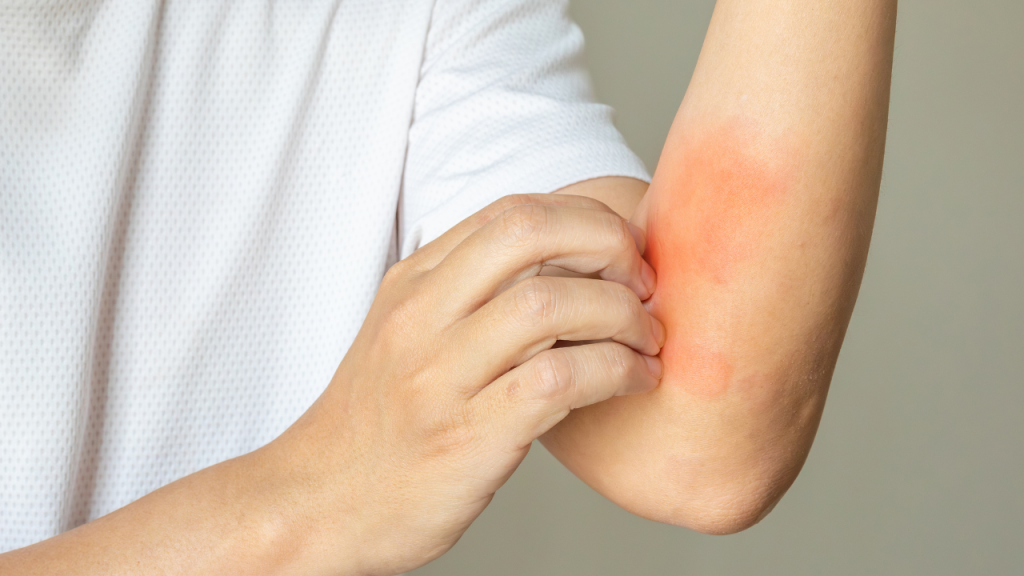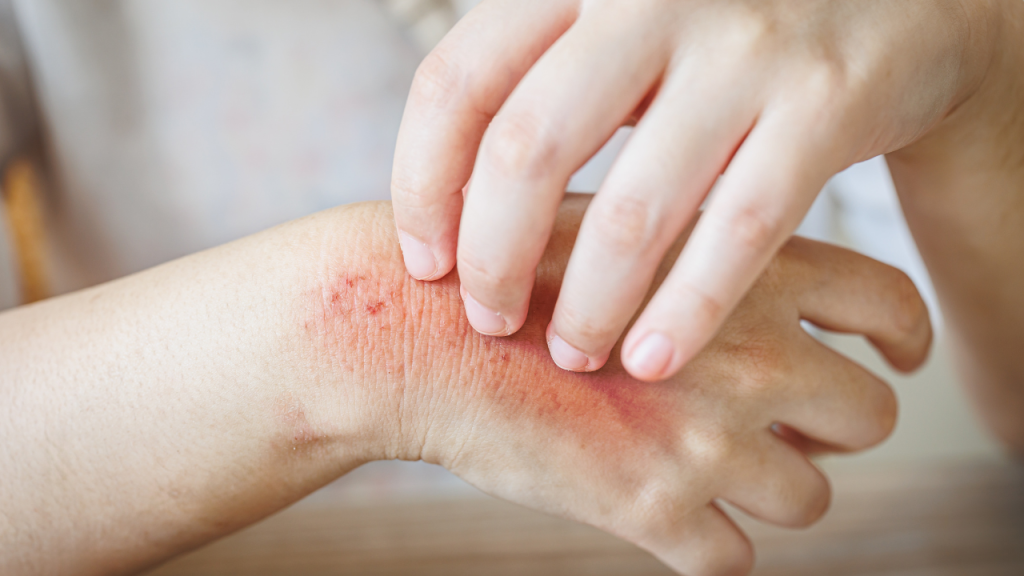 Skin rashes and allergic reactions are common issues arising from various environmental, dietary, or genetic factors. These reactions can vary widely in severity and presentation, ranging from mild irritation to severe and life-threatening conditions. Recognizing when a rash requires medical attention is crucial in managing symptoms effectively and preventing complications.
Skin rashes and allergic reactions are common issues arising from various environmental, dietary, or genetic factors. These reactions can vary widely in severity and presentation, ranging from mild irritation to severe and life-threatening conditions. Recognizing when a rash requires medical attention is crucial in managing symptoms effectively and preventing complications.
Read on to learn when to see a doctor for a skin rash.
Identifying Common Causes Of Skin Rashes
Skin rashes arise from diverse factors, each capable of irritating the skin in unique ways. Infections caused by bacteria, viruses, or fungi can trigger inflamed, itchy patches. Autoimmune disorders, where the body mistakenly attacks its own cells, can also manifest as rashes. Certain medications might also induce rashes as side effects, signaling an adverse reaction.
Contact with allergens, such as chemicals or natural substances, is another prevalent cause. One notable example is exposure to poison ivy, which typically results in a distressing rash characterized by redness, intense itching, and blisters as the skin reacts to the plant’s oil, urushiol.
However, for detailed information on managing exposure and treatment, checking out resources about poison ivy on the skin can provide valuable insights. Understanding these triggers and the nature of the rash can help determine the right course of action.
When To Seek Medical Attention For A Skin Rash
It’s essential to know when a rash is a minor annoyance that can be treated at home and when it poses a more serious health risk requiring professional medical intervention. Here are some circumstances under which a doctor’s visit is imperative:
- Persistent Duration: If a rash persists for more than a few days without any signs of improvement, it’s advisable to consult a healthcare provider. Persistent rashes could be a sign of an underlying health issue that needs to be addressed.
- Severe Symptoms: Rashes accompanied by severe symptoms, such as pain, fever, or an infection (indicated by swelling, warmth, pus, or red streaks), require immediate medical attention. These symptoms can signify a more serious condition, such as a bacterial infection or an allergic reaction.
- Widespread Rash: When a rash covers a significant portion of the body or spreads rapidly, it might indicate an allergic reaction or an infection. Such extensive skin involvement often requires systemic treatment rather than topical management.
- Involvement of Face or Joints: Rashes that affect sensitive areas like the face or joints can be particularly concerning. These rashes can lead to significant discomfort and, in some cases, impairment of normal functions, such as mobility or vision.
These are the instances when you should seek medical attention for skin rashes. Also, if you want to learn more about skin care strategies, visiting online resources like cumberlandskin.com can be an excellent idea as they provide additional insights and professional guidance.

Signs Of An Allergic Reaction
Some rashes stem from allergic reactions, which can escalate into severe conditions such as anaphylaxis—a life-threatening emergency. This escalation is marked by a series of acute symptoms that demand immediate medical attention to prevent serious complications or even death. Key symptoms of anaphylaxis include:
- Difficulty Breathing: Airways can swell, restricting airflow and causing wheezing or gasping.
- Dizziness: A drop in blood pressure may lead to lightheadedness or fainting.
- Swelling of the Face and Lips: This can rapidly worsen, potentially obstructing breathing.
- Rapid Heartbeat: The heart may race as it struggles to pump blood effectively.
Prompt recognition and urgent treatment are crucial to managing these symptoms effectively.
Diagnostic Procedures For Skin Rashes
When diagnosing the cause of a skin rash, healthcare providers utilize a range of diagnostic tools to ensure a precise assessment. Initially, a thorough physical examination is conducted to observe the rash’s appearance and distribution. Patient history is also crucial, revealing past medical issues or exposure to potential allergens.
Furthermore, allergy testing can pinpoint specific triggers, while blood tests help identify underlying systemic conditions that might manifest as skin rashes. In some cases, skin biopsies are performed to examine tissue samples under a microscope for more detailed analysis. These comprehensive diagnostic steps are vital for developing an effective treatment plan tailored to the patient’s needs.
Common Treatments For Skin Rashes
Treatment for skin rashes varies based on the underlying cause. Options may include:
- Topical Treatments: Corticosteroid creams, ointments, or moisturizers can help reduce inflammation and treat symptoms.
- Oral Medications: Antihistamines can alleviate itching, antibiotics can help manage bacterial infections, or oral corticosteroids can be used for severe cases.
- Lifestyle Modifications: These include avoidance of known allergens, diet changes, or personal hygiene improvements.
With these available treatment options, you can deal with your skin rashes and allergies more effectively.
Preventing Skin Rashes
Prevention is key in effectively managing skin rashes and minimizing their occurrence. This proactive approach involves several strategies to shield the skin from irritants. Firstly, identify and avoid known allergens to prevent trigger exposure. Use gentle skincare products that are free from harsh chemicals to reduce the risk of irritation.
Furthermore, protective clothing is a barrier between the skin and environmental irritants, such as UV rays or abrasive materials. Maintaining good hygiene can help keep the skin clean and reduce the buildup of irritants.
Lastly, educating yourself about potential skin irritants and their avoidance is crucial in minimizing the chances of developing rashes. Awareness, preventive measures, and maintaining an ultimate skin care routine together form a robust defense against skin irritation.
Conclusion
Recognizing when to seek medical help for a skin rash can significantly affect the outcome and management of the condition. By keeping the information mentioned above in mind, you’ll understand the nature of skin rashes and appropriate response measures, which can lead to quicker recovery and prevent further complications.
